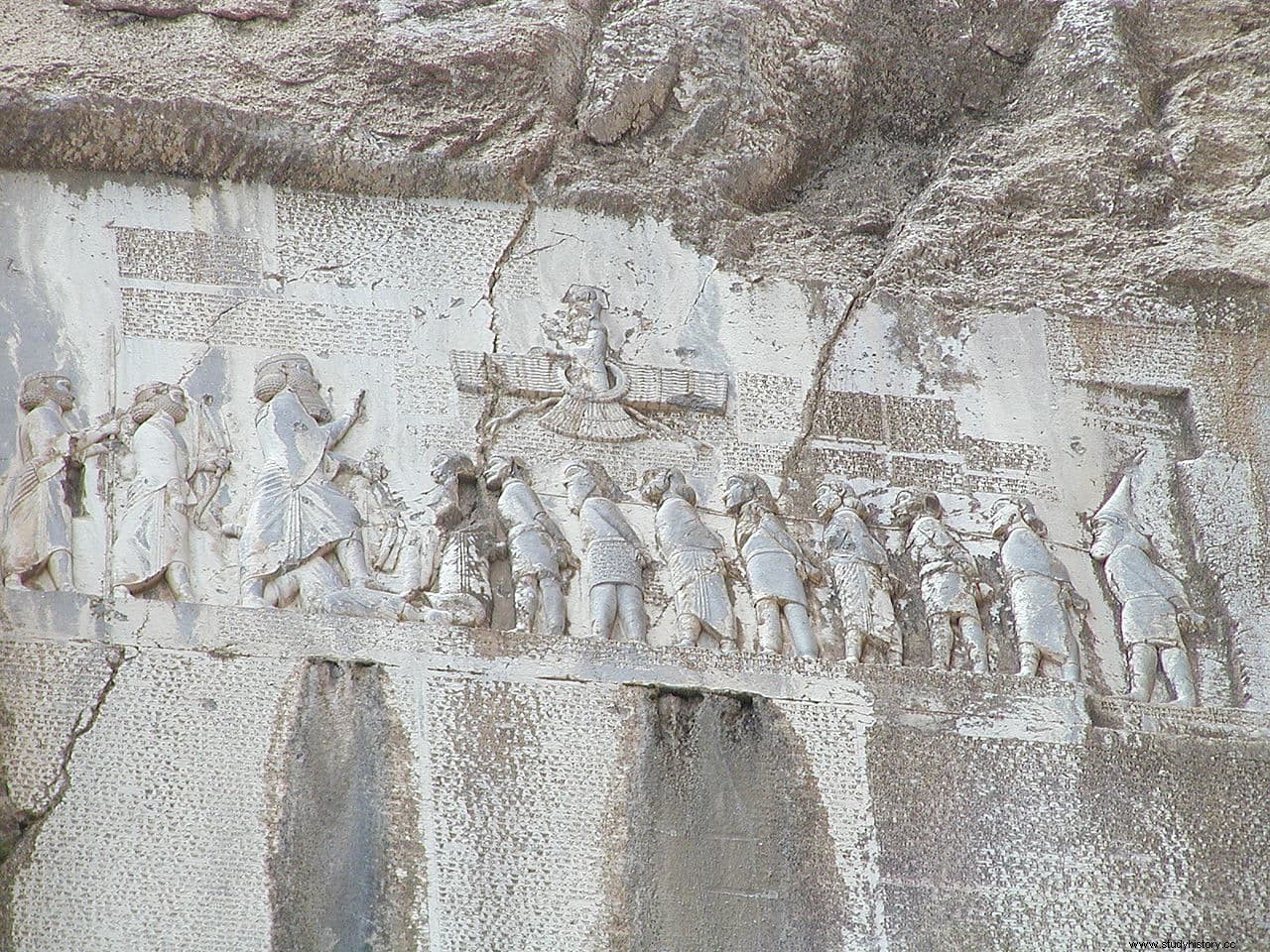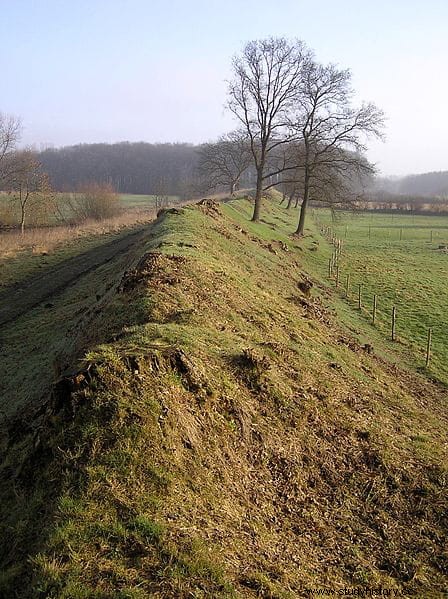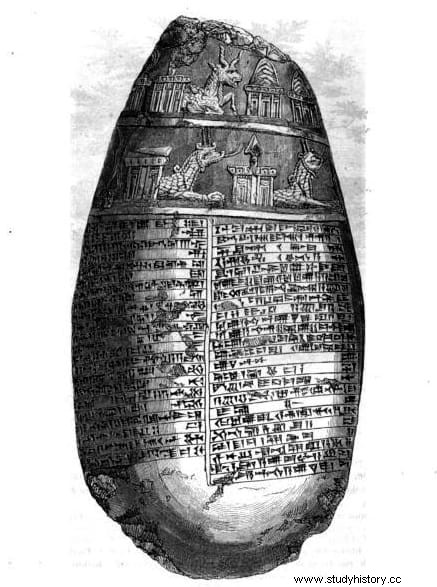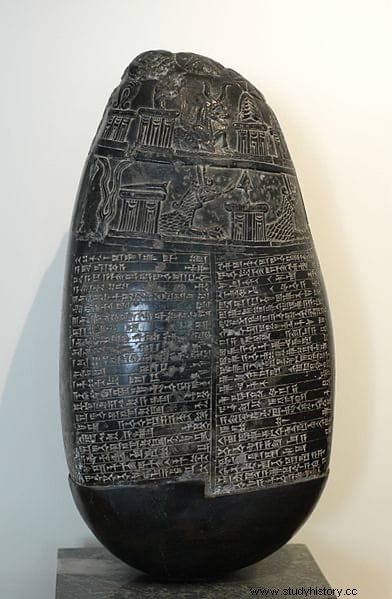At the end of the 18th century, cuneiform writing was a mystery to European historians. The first to report strange writing carved on temples and clay tablets it was the Venetian ambassador Giosafat Barbaro, who in 1474 had been in Persepolis. Then in 1598 Robert Shirley found the monumental Behistun inscription, the Persian part of which would not be fully deciphered until 1838 by Henry Rawlinson. With this material, he himself along with other scholars managed to decipher cuneiform writing in the late 1850s, beginning the development of modern Assyriology.
But before all this, the peoples who had used cuneiform writing, Sumerians, Akkadians or Hittites, did not even have a name to identify them in historiography.

The first steps in the study of these ancient and unknown civilizations would begin to take place in the last decades of the eighteenth century. And the cause of everything would be the journey of a simple botanist, who had previously been a farmer and peasant.
His name was André Michaux and he owned a farm in Satory, near Versailles. When he was 24 years old he became a widower, he left the farm to his brother and began to study botany with Louis Guillaume Le Monnier, the royal physician and botanist. Nine years later, having obtained his license, he began to be entrusted with missions on expeditions outside of France.
One of them is the one that took him to Persia in 1782 with the aim of collecting rare and new plant specimens, accompanying the French consul Jean-François Rousseau. The trip did not start too well, since near Basra all his luggage was stolen, except for his books. Already in Persia, he would spend two years in the region exploring the coasts of the Persian Gulf and the Caspian Sea. It seems that he even treated the Shah himself for some health complications, earning his appreciation, although there is no documentary evidence of this. It is most likely a legend based on his interest in the medicinal properties of Persian plants.

On one occasion, visiting a friend who was a doctor in Baghdad, they approached some ancient ruins near the city of Semiramis (present-day Taq Kasra). There Michaux found a strange black stone. It had a series of weird carvings on its top and what looked like some kind of weird writing on the bottom. According to an account in his diary, he stayed with her and took her with him three and a half years later, in 1786, when he returned to France with a large herbarium and abundant seeds of different plants that earned him the title of Royal Botanist.
There it was sold to the French Museum of Antiquities in 1800 for about 1,200 francs, which kept it in the National Library. Historians throughout Europe had never seen anything like it, and the news of its discovery spread like wildfire through the scientific societies of the continent. Because the fact is that that stone was the first complete written testimony of the existence of the ancient Mesopotamian culture that reached Europe.

It was a kudurru (a property registry) and the ruins where it had been found were those of ancient Ctesiphon south of Baghdad and on the banks of the Tigris, from the 12th century BC. But we would still have to wait 57 years until cuneiform writing was deciphered to know what was put on the stone and what it was used for.
Rawlinson was the one who proposed the first transcription of the stela in 1861. But the complete translation would come from the hand of Jules Oppert in 1895. The inscription begins:

It is written in Akkadian, in the Babylonian dialect with cuneiform signs and archaic spelling. It is a contract for the donation of land by a father to his daughter, with a series of final curses in case of violation of the stela itself or contestation of the donation. The land in question is located in the town of Kar-Nabu, northeast of Babylon, and has an area of 162 hectares.
And continue with the curses:
The kudurru itself is 46 centimeters high by 20 wide and weighs 22 kilograms. It is dated between 1099 and 1082 BC, during the reign of Marduk-nadin-ahhe in Babylon. On its face and back it contains 95 lines written in four columns, crowned by two registers containing 21 iconographic symbols representing fantastic animals, divine attributes and stars.
Although at first it was thought that these stones could be a kind of border marks that would be placed in the fields, the truth is that all those found come from temples, so it is assumed that they were kept there, while the interested party he was given a clay copy.
Caillou Michaux
by Grands archeological sites
on Sketchfab
As for Michaux, Louis XVI sent him to the United States in 1785, in search of new plants that could be useful in medicine, construction and agriculture. For ten years he sent boxes of plants and seeds to France, while introducing new species to America. Upon his return, the ship he was traveling in was shipwrecked, although he managed to survive and save most of the specimens that he brought with him.
In 1800 he embarked on Nicolas Baudin's expedition to Australia, but abandoned it midway in Mauritius, from where he went on to Madagascar attracted by his exotic flora. There he died in 1802 of tropical fevers without ever knowing what he put on the famous stone that today bears his name.
